The “Soil Moisture and Wildfire Prediction Workshop” will be held in association with the 6th International Fire Behavior and Fuels Conference hosted by the International Association of Wildland Fire. There is still an opportunity to join us April 29, 2019 at the Hyatt Regency Albuquerque in Albuquerque, NM. Please see the agenda below.
If you’d still like to register, please do so by 04/15/19 using the following link: http://albuquerque.firebehaviorandfuelsconference.com/registration/. If you elect to only attend this workshop, under Conference Registration, there is an option for Workshop Attendance Only where you can select the workshop. A $20 registration fee will be assessed at that time.
Please feel free to reach out to matthew.levi@uga.edu with any questions.
We look forward to seeing you in Albuquerque!
Soil Moisture and Wildfire Prediction Workshop
April 29, 2019 (8:50 am – 6 pm)
In association with the 6th International Fire Behavior and Fuels Conference hosted by the International Association of Wildland Fire
Contacts: Matt Levi – Assistant Professor; University of Georgia; matthew.levi@uga.edu
Windy Kelley – Extension Program Coordinator; USDA Northern Plains Climate Hub; wkelley1@uwyo.edu
Emile Elias; Director – USDA Southwest Climate Hub; Emile.Elias@ARS.USDA.GOV
Tyson Ochsner; Associate Professor – Oklahoma State University; tyson.ochsner@okstate.edu
Location: Hyatt Regency Albuquerque (505-842-1234) 330 Tijeras NW Albuquerque, New Mexico, USA, 87102
Focus: Soil moisture modeling, wildfire danger modeling, Climate Adaptation Science Center project on wildfire probability mapping, Soil MERGE (SMERGE) soil moisture project
Objectives:
Identify science and management needs from the fire community and soil moisture community related to modeling, risk assessment, planning, and decision support tools. Find synergy between groups and link similar projects to existing Soil MERGE (SMERGE) and Climate Adaptation Science Center projects by learning and discussing current trends and status of:
• Wildfire occurrence, impacts, and response
• Fire modeling and fire danger ratings
• Soil moisture monitoring and modeling
• Linkages between soil moisture, fuel moisture, and wildfire
Participants will identify opportunities for soil moisture monitoring and modeling to benefit fire modeling and fire danger rating for the sake of improved wildfire preparedness and response.
Geographic focus: Rio Grande River Basin, Red River Basin, Southwestern and South Central US
Format: Interactive 1–day workshop. Select speakers will discuss the ‘state’ of the science and practice and small group discussions will identify stakeholder needs.
Agenda
8:00 – 8:50 am – Registration / informal greetings / coffee and snacks
8:50 am (10 mins) Welcome and objectives of workshop (Matt Levi, University of Georgia)
9:00 am (10 mins) – Welcome to IAWF (Tom Zimmerman, conference chair and International Association of Wildland Fire past president)
9:10 am (10 mins) – Intro to the USDA Climate Hub & SMERGE Collaboration (Dannele Peck, USDA-ARS)
9:20 am (10 mins) – Overview of wildfire probability mapping project (Matt Levi, University of Georgia)
9:30 am (15 mins) – Interactive introductions
9:45 am (45 mins) – Bringing fire and soil moisture worlds together: Current trends in wildfire occurrence, impacts, and response and current status of fire modeling and fire danger ratings (Tim Brown, Desert Research Institute)
10:30 am (30 mins) – Break
11:00 am (45 mins) – Organize into small groups for guided discussion (soil moisture / fire management) Reports from small groups will be discussed interactively
11:45 am (45 mins) – Regional perspective of wildfire trends Southwestern and South Central US (Doug Cram, New Mexico State University)
12:30 pm (60 mins) – Lunch
1:30 pm (45 mins) – Current status of soil moisture monitoring and modeling and introduction to SMERGE (Wade Crow, USDA–ARS)
2:15 pm (30 mins) – Recent contributions related to soil moisture – wildfire relationships (Tyson Ochsner, Oklahoma State University)
2:45 pm (30 mins) – Break (snacks/coffee)
3:15 pm (75 mins) – Organize into small groups for discussion on “What are some opportunities for soil moisture monitoring and modeling to benefit applied fire modeling and fire danger rating? What are some of the main obstacles?” Reports from small groups will be discussed interactively
4:30 pm (30 mins) – Large group discussion and synthesis
5:00 (15 mins) – Concluding remarks and opportunities for continued interaction
